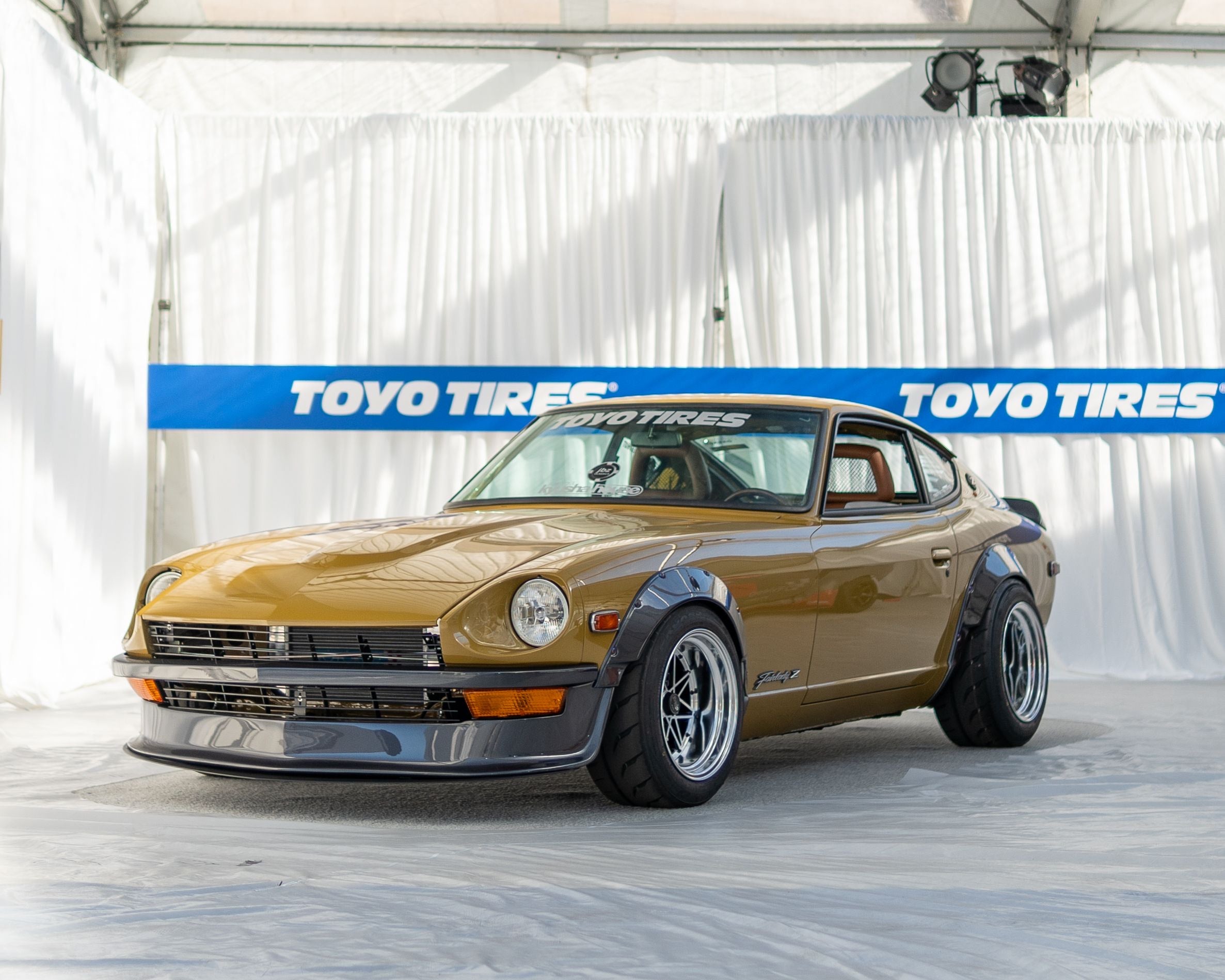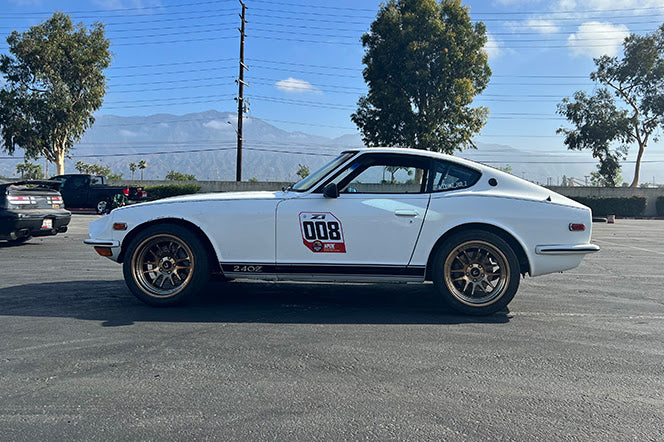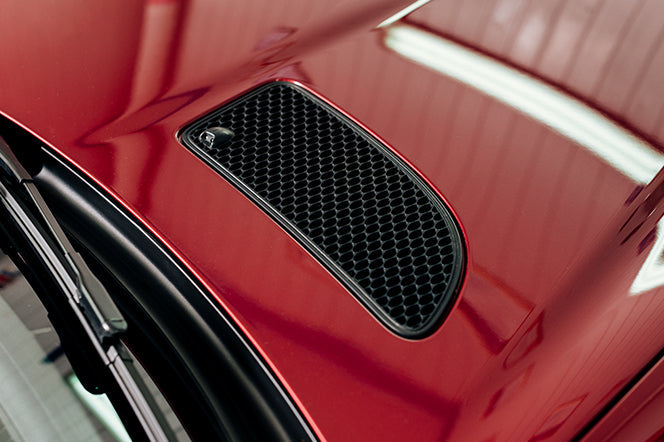Ever seen rust creeping up on your Datsun Z and wondered how to best address it without making the problem worse?
Let's talk about how you can deal with that difficult rust and redo the protective coating so your Datsun Z keeps looking sharp and sturdy for years to come. With a little elbow grease and the right tips, working on the underbelly of your vintage treasure can actually be pretty fun.
And of course, we'll do our best to make sure it doesn't make a comeback!
Disclaimer: This article is authored by a member of the Skillard community and reflects their personal views, not necessarily those of Skillard. We welcome your feedback and corrections in the comments to help us continually improve this content.
Table of Contents
Find the Extent of Rust Damage
Tackling underbody rust on a Datsun Z can really be an ordeal, and it's not something you'll complete overnight, so take a deep breath and get comfortable!
Let me start off by suggesting that the first thing you'll want to do is closely inspect the underside of the car and document every area with rust; both minor (treatable and not too rotted out) and major (places that are rotted out where you'll have to cut out and weld in patches).
I always grab my flashlight and a little mirror to look into those tough places. It's the best way to catch all the hidden rust spots. Again, you'll want to sort the rust into those two columns; this lets me choose the right cleaning plan.
As far as safety is concerned, wearing goggles and gloves is always a good idea. Rust particles are no joke, and I'm not risking my health while fixing up my car! When grinding away rust, you'll want ot wear a respirator, too.
You should also get to know the usual rust places, especially on Datsun Z cars like the iconic 280Z and 240Z. The Z Car club put together this handy diagrams to show where they are:

These models like to show rust, mostly around the floor pans and frame rails. Sometimes, a minor spot can hide a bigger problem once you look deeper. I've yanked back carpets to show major chaos that needed a pro's touch more than once.
Once you've looked at the rust, figuring out how to handle it is your next step. For surface rust, a wire brush on a drill has been great for getting rust off for me. For the tougher cases, I go for chemical removers or media blasting - and remember, apply a rust-prevention coating afterwards to add a solid protective layer. It won't fix your existing damage, but it may help prevent future damage. We'll talk about that more in a bit.
For severe cases where the rust has totally eaten through the metal, swapping out parts like the floor pans and frame rails might be your only shot. It's a relevant fix that usually needs solid welding skills but it's totally worth it to keep your classic looking sharp and to protect your investment.
Choose the Right Tools for Mechanical Cleaning
I usually start with a media blaster for cases where there's a ton of rust. It beats the manual labor of sanding for days - it does make a mess, though, so you'll want to make sure you're in a good area to contain that. You can get one for as cheap as $20 from harbor freight, though an air compressor is the expensive part. You'll want one with at least 10 gallons; you can technically get away with a smaller and cheaper tank, but you'll constantly be waiting for your tank to refill in-between blasting.
This tool blasts high-pressure sand glass beads or soda, stripping away rust and old paint to show the bare metal. Although useful, it's messy and may need protection. Safety is another factor to think about if you're setting up a shop.

For minor rust places I turn to my power grinder with a brush attachment or a handheld sander. These tools are pretty great for targeted areas and - though they need more effort - they have great control during rust removal. It's really useful to clean the metal closely before recoating to prevent rust from reappearing. Angle grinders make quick work of rust, too, but they are super abrasive, so you really want to make sure you're staying away from plastic or fiberglass bits. It'll chew through those in miliseconds, so be very careful. It also tends to cause sparks, so remember your safety equipment.
For quiet operations or precise work, I also recommend the Astro Pneumatic Air Needle Scaler. It uses compressed air and fine needles to access tight places - perfect for complete work.
Finally, it's smart to apply a tough rust inhibitor or undercoating like Rust Preventative Undercoating from Crum Creek. This seals the clean metal from moisture and salt, which are major causes of rust. We'll talk about coatings here in a bit, too. First, though, we have to convert the rust.
Apply Chemical Rust Converters
I start by giving the area a complete scrub - then I apply some chemical rust converter. Have you ever used one? They're pretty cool because they don't just get rid of the rust: they change rust into a new material called iron tannate which stops the corrosion, and helps get the metal ready for a new coat of paint. These converters usually have tannic acid and an organic polymer which mix with the rust to turn it into that tough black layer.
One product that's worked well for me is Ospho. Before I get going with the application, I always make sure the space is well-aired out since these chemicals are strong, and it's a good idea for your safety. With gloves on, I use a paintbrush to carefully get all the rusty places, which makes sure the product seeps into every little space. It's important to know that rust converters work best only on rusty areas and not on clean metal. You don't want this stuff getting on your skin, either!

What I really enjoy about products like Ospho is seeing the change happen. As you spread it on, you can watch the rusty places start to darken, showing you that the chemical reaction is doing its magic. It's pretty awesome to see the rust disappear right before your eyes. It turns into a powdery kinda of white material once it's done drying and converting the rust.
After putting on the converter - you must add a layer of paint. Unlike products like POR-15, Ospho is not a paint, and you need to coat over it to protect the metal. This step is really meaningful especially for the underbody of a classic car like the Datsun Z which deals with all kinds of rough conditions. Each rust converter comes with its own set of directions: following these exactly will make sure the best results are achieved. While some are set for painting in a few hours others might need to dry longer.
Clean and Degrease the Metal Surface
Next, I usually start with white spirit or a high-quality engine degreaser. These are great for getting rid of any oils or residues that might stop the primer from sticking properly to the metal.
After putting on the degreaser I make sure it's all wiped off. You really want the surface to be super clean so the primer can stick well. And remember - it's a good idea to get rid of any waste according to local environmental rules - you wouldn't want to add to other problems.
For those tougher areas where an easy wire Lexer brush isn't enough - you may even want to use a mild acid like phosphoric or sulfuric acid. Handling acids can be serious matter, so it's really important to wear protective gloves, goggles, and old clothes. After putting the acid on, as the directions say, I let it sit for a bit to eat away at the rust, then neutralize it with a mix of water and baking soda. It's important to neutralize the acid to stop its action and avoid more harm.
P.S. You can also pay companies to acid dip your entire frame! If you have substantial amount of rust, this is certainly a lot easier than trying to do all of this yourself.

Next, once the metal is dry, I apply a metal-etching primer. This kind of primer sticks well and also helps to keep future rust at bay.
After that I smooth it down with fine-grit sandpaper. This step might not seem important but it's a must to get a smooth base for the top paint layer - and it's totally worth the extra effort for a perfect finish.
To top it off I apply the top coat of paint. This seals everything and freshens up the look of the underbody.
Primer, Paint, and Seal
Once that's all done, go with a quality epoxy primer. This foundational layer is meaningful as it protects your car by keeping rust from coming back. Let's talk about this valuable step in the rust removal process.
Once you've cleaned and scraped off any rust and old undercoating it's important to make sure that the area is totally clean and dry. Again, depending on the rust situation you might want to think about sandblasting for a smoother finish. For not so bad rust sanding or chemical stripping can also work well.
Now it's time to apply the epoxy primer. I like a spray gun to get a nice even coating although a brush is useful for getting into tight places or for quick touch-ups. It's better to apply a few thin layers rather than one thick one to avoid drips and make sure it dries evenly.

Having patience is a big part of curing the primer. Skipping out on curing time can mess up the entire project. Each brand comes with specific instructions on cure time that are important to nailing a good result. You really have to stick to these guidelines.
Once the primer has totally hardened - the next step is to apply a topcoat or a special undercoating. This part lets you play around with different finishes and protective layers like paint or a rubberized coat which beefs up the car's defense against the features and wear. Some people like a spray-on bedliner for undercoatings. Others like POR-15. There are also specially-made undercoating finishes that can get pretty fancy. The choice is up to you.
Seal the Seams
Once we're ready, sealing the seams definitely helps a lot, trust me. I usually start by applying some tough seam sealant right over the primer. This blocks the welds and seams from moisture, which, as you know, usually kicks off the rust.
When I'm working on this job, I pay extra attention to the overlap joints and other places where water likes to hang out. These areas are really open to problems, and if moisture hangs around too long, rust will surely pop up. I've tried tons of seam sealants, but I like to go for companies that make sealants made just for cars like Eastwood or 3M. These products are awesome because they're made to handle the flexing and vibrations of the car, and they stick super well.
Here's how I go about it. First off, I make sure to clean the area closely with a solvent wipe, and then I go over it again with a clean cloth to make sure all the dust and dirt is gone. Next - a caulking gun - I lay the sealant right into the seams to make sure it's smooth and totally covers up any gaps to shut out moisture.

A popular choice is Eastwood's Seam Sealer on the floor pans and trunk seams. I prepped the surface, applied the sealant, and then really worked it into every little crack with a brush dipped in mineral spirits. They have both a brush on and sprayable sealer
After sealing it's a good idea to let everything dry closely - I like to wait around 24 to 48 hours. Being patient really makes a difference here. Once it's dry I wrap up with a coat of rust-preventative paint like POR-15 to keep everything looking cool and well-protected.
Apply a Protective Coating
The perfect protective coating can help you achieve both great looks and long-lasting protection. I've looked at all sorts of options, from easy rubberized sprays to the more intense POR15, and here's what I've found.
Let's start with rubberized undercoating. I like how easy it is to use. Just spray it on, and you're set. It adheres well and even cuts down on noise - a nice bonus, right? I like to let it dry overnight to be completely sure, even though it usually sets in a few hours.
If you need something tougher, you could think about a bedliner like Raptor Liner. It will need a bit more prep with a spray gun but the result is a sturdy chip-resistant finish. It's tough enough to handle some really harsh conditions and typically takes about 24 hours to cure completely. It has a tough, bumpy texture - yknow, like in the bed of a truck.

Moving on to POR15 - this is the way to go if you're dealing with serious rust. You start by tackling the rust, then apply a metal-prep answer and finish with the coating. It's a bit of a process, but the result, which stops rust cold, is definitely worth the effort. Just make sure to allow about two days for it to fully cure before it gets wet.
Then there are bitumen-based coatings. These aren't very common, but they're great at waterproofing, especially in areas that get a lot of water splash. Bitumen's tar-like texture forms a really tough moisture barrier. It's a bit specialized, but when you think about specific cases, it's really useful.
Also think about environmental factors as all these coatings are pretty solid but keep in mind what your car endures. Now to give you an example: if you live near the coast where salt is a constant threat you might benefit more from a bedliner or POR15 than a basic rubberized spray.
Prevent Future Rust Formation
To keep your Datsun Z looking sharp and rust-free it's a good idea to pick up some preventative habits. Start by washing your car every now and then - especially after it's been out on salty roads. Applying some self-healing protective wax coating is also smart. This kind of coating is awesome because it can fix itself which really helps protect your car's underbody.
Remember the life of the wax and your car's overall shape depend on sticking to these maintenance routines. How often do you think you should check the underbody to keep it in top shape?
Be proactive in finding the first signs of rust and address them right away to sidestep expensive repairs down the road. Doing regular inspections is pretty useful especially after your car has faced rough weather. Let's keep your classic car looking great all year long.

If you want to add some elegance and help with the performance of your Datsun if it's a 240Z, 260Z or 280Z check us out at Skillard. We have everything from slick bumpers and sturdy aluminum door cards to beautiful center consoles and cool spoilers.
Our parts are all designed to help with both the looks and performance of your Z. Why not swing by Skillard.com and take a look at our cool catalog? You might just find the perfect parts to take your Datsun restoration or upgrade to the next level!





